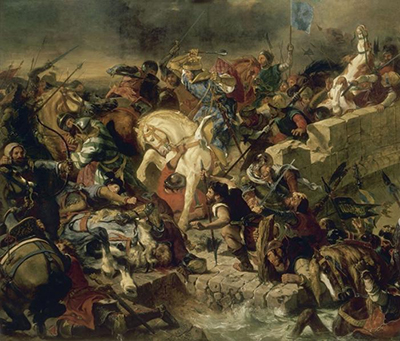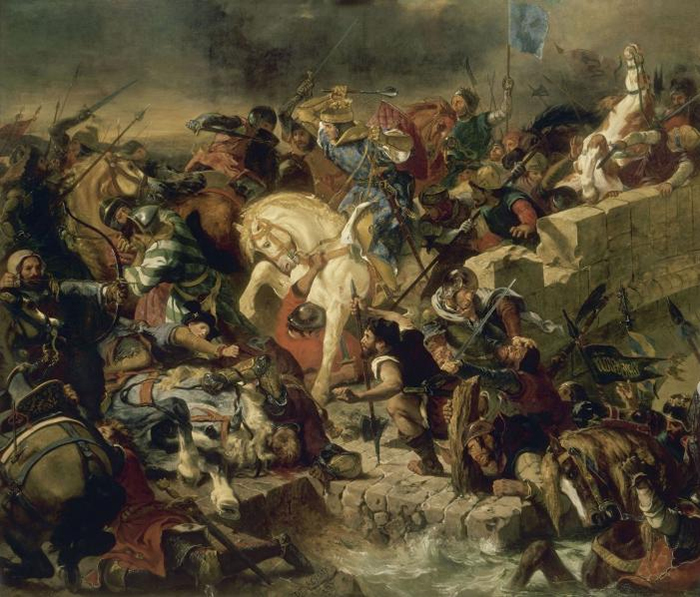Louis-Philippe I commissioned a large number of artists to provide a range of paintings for his Gallery of Battles at the Palace of Versailles. This artwork was the only item contributed by Eugene Delacroix.
The display of work was eventually unveiled in 1837, the same year that this particular work was completed. It still hangs in the palace today and receives a huge number of visitors within this popular venue. At the time of writing, it hangs between the work of Horace Vernet and Charles-Philippe Larivière. Delacroix was someone who produced work in the war genre many times during his career and so became a natural choice when patrons were handing out commissions. He was also highly respected, technically, and the Romanticist style that he used was also well suited to the high emotions found within content such as this. At a time well before the modern media, paintings were an important way of teaching the public about historical moments as well as celebrating victories within an environment that could be entirely controlled between the artist and patron.
The scene here is entirely chaotic, which is in-keeping with how this artist tended to depict scenes of war. This period in European history was full of internal conflicts and there would be no shortage of inspiration for the artist if he looked through the last couple of centuries. Invariably, he would add several key figures who were perhaps identifiable from the original battle, and then fill the rest of the scene with standard figures from the battle. The detail and consistent activity right across the canvas reminds some of the work of Peter Paul Rubens, or even some members of the Italian Renaissance. Specifically Hippopotamus and Crocodile Hunt or Saint George and the Dragon provide energy directly from the original battles and help to communicate to us the atmosphere of these various events. There have, of course, been countless other artists who have also taken on this genre over the centuries, with many exciting attributes found within it to inspire all manner of different styles.
Further notable battle scenes from Delacroix included The Battle of Nancy and The Battle of Giaour and Hassan. The artist would not always travel to the different regions in order to study the location of each battle, but might instead research various publications about the areas, as well as the weaponry and attire of the period. He was still able to produce items that patrons willingly accepted and so his accuracy must have been sufficiently precise. In some cases, the element of victory and success could be more important than remaining faithful to events themselves, though that would depend on who was giving the commission and what their intentions were behind it. With regards the Gallery of Battles, it was more about capturing history and providing a stunning backdrop to one of the main rooms of the palace.





